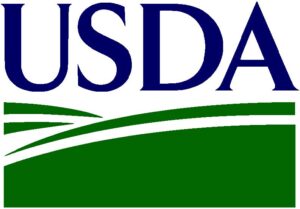And in the House…
As expected, the House Committee on Agriculture released their 557-page draft version of the farm bill on July 5, called the Federal Agriculture Reform and Risk Management (FARRM) Act. The draft began the mark-up period this morning, July 11, and will likely last until the end of the week.
The savings from the House bill total $35 billion, with $16 billion coming out of Nutrition title programs and $6 billion out of the Conservation Title.
Conservation
Concerning the world of conservation, this draft consolidates 23 programs into 13, leaving the actually funding cut to the Conservation Title slightly less than the Senate version. Rather than leave multiple programs in the Farm Bill, the House would rather cut out unnecessary complexities that they say create inefficiency.
Dairy and Risk Management
For dairy farmers, a similar risk management strategy to the one seen in the Senate version was included, which aims to level prices through supply management. For other forms of risk management, many programs were repealed, including: direct payments, counter-cyclical payments, average crop revenue election, and supply revenue assistance payments. The House bill encourages more flexible private risk management, rather than “one-size-fits-all” government programming.
Nutrition and Rural Development
One of the most notable moves in the draft involve the large cuts to SNAP (45% of all Nutrition Title cuts), which, according to The Center on Budget and Policy Priorities, would cut between 1.8 and 3 million low-income people out of the program- including 280,000 children who rely on SNAP to make them eligible for free school lunches. The size of the cuts in SNAP were made possible by eliminating past flexibilities in eligibility requirements, called categorical eligibility. Rather than straight income and asset records dictating eligibility, those with income levels slightly above the federal income limit, or who had some assets but income below the federal income limit were eligible. The House draft’s exclusion of this flexibility is aimed at cutting the “waste” and “fraud” that was occurring within categorical eligibility. The reasoning behind categorical eligibility is that most SNAP participants’ disposable incomes are inadequate in assessing need, as many participants would have to choose between a car and food without the flexibility- an especially detrimental choice in rural states.
There will be more funding for food banks, and seniors and low-income families will have more funding for accessing farmers markets through government coupons. A program that allows restaurants to feed the homeless will change, mandating the recipients to demonstrate need. The Rural Development Title includes $50 million mandatory funding, which is $65 million less than the Senate version, and does not reauthorize Rural Business Enterprise Grants.
Research and Extension
Under the Research, Extension and Related Programs Title VII, 77 research and extension reports and programs were taken out, with authorized spending seeing a $500 million reduction. In general, the title will see direct spending fall $83 million over the next five years. Competitive grants for commodity or state specific applied research or extension will require a 1:1 match, which will place an excessive burden not seen before.
Research initiatives in specialty crops, organic, and sustainable agriculture were reauthorized, along with the Beginning Farmer and Rancher Development Program (BFRDP). BFRDP has annual funding of $10 million in the draft, $7 million less than the Senate bill.
Sustainable and Organic Farming
The Farmers Market Promotion Program was renamed the Farmers Market and Local Economies Program, and will see expansions in direct-sales promotion, and local food system infrastructure. The National Organic Board will see an increase in funding, along with enhanced regulatory support, but the National Organic Certificate Cost Share Program is repealed. The Specialty Crop Block Grant Program, which has brought Vermont many new opportunities, will have the same annual mandatory funding, set at $70 million, with a $15 million portion for multi-state projects over the course of five years.
An amendment weakened the effectiveness of the Plant Protection Act, making it easier for biotechnology products to be unregulated, and makes it more difficult to require regulation based on environmental assassin petitions. The amendment also mandates a report to congress on further strategies to “reduce the red tape on biotechnology”.
There is so much more, but these are just a few notable things in the draft. It is too early to guess what might happen, but it is a key time to contact your Congressional Representative, and let him or her know what to support!
A live stream and updates of the mark –up period can be found on the House Agriculture Committee’s website: http://agriculture.house.gov/
National Sustainable Agriculture Coalition also continues to have great policy coverage of the latest developments: http://sustainableagriculture.net/






